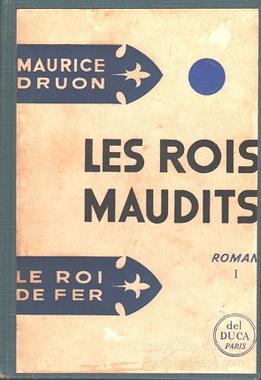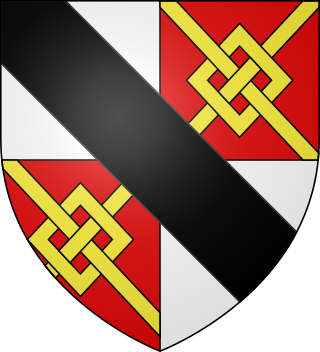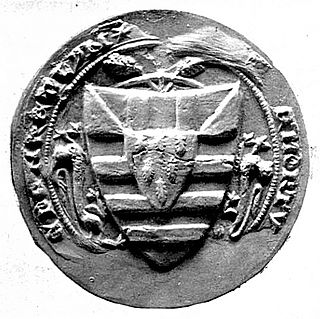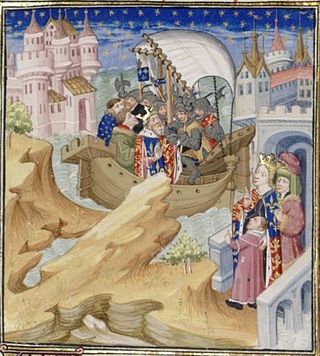This article needs additional citations for verification .(May 2019) |

Edward II of England has been portrayed in popular culture a number of times.
This article needs additional citations for verification .(May 2019) |

Edward II of England has been portrayed in popular culture a number of times.
Onscreen, Edward has been portrayed by:

Edward II, also known as Edward of Caernarfon or Caernarvon, was King of England from 1307 until he was deposed in January 1327. The fourth son of Edward I, Edward became the heir to the throne following the death of his older brother Alphonso. Beginning in 1300, Edward accompanied his father on campaigns in Scotland, and in 1306 he was knighted in a grand ceremony at Westminster Abbey. Edward succeeded to the throne the next year, following his father's death. In 1308, he married Isabella of France, the daughter of the powerful King Philip IV, as part of a long-running effort to resolve the tensions between the English and French crowns.

Isabella of France, sometimes described as the She-Wolf of France, was Queen of England as the wife of King Edward II, and de facto regent of England from 1327 until 1330. She was the youngest surviving child and only surviving daughter of Philip IV of France and Joan I of Navarre. Isabella was notable in her lifetime for her diplomatic skills, intelligence, and beauty. She overthrew her husband, becoming a "femme fatale" figure in plays and literature over the years, usually portrayed as a beautiful but cruel and manipulative figure.

Edmund Fitzalan, 2nd Earl of Arundel was an English nobleman prominent in the conflict between King Edward II and his barons. His father, Richard Fitzalan, 1st Earl of Arundel, died in 1302, while Edmund was still a minor. He, therefore, became a ward of John de Warenne, Earl of Surrey, and married Warenne's granddaughter, Alice. In 1306 he was styled Earl of Arundel, and served under Edward I in the Scottish Wars, for which he was richly rewarded.

Roger Mortimer, 3rd Baron Mortimer of Wigmore, 1st Earl of March, was an English nobleman and powerful Marcher Lord who gained many estates in the Welsh Marches and Ireland following his advantageous marriage to the wealthy heiress Joan de Geneville, 2nd Baroness Geneville. Her mother was of the Royal House of Lusignan. In November 1316, he was appointed Lord Lieutenant of Ireland. He was imprisoned in the Tower of London in 1322 for having led the Marcher lords in a revolt against King Edward II in what became known as the Despenser War.

The Troublesome Reign and Lamentable Death of Edward the Second, King of England, with the Tragical Fall of Proud Mortimer, known as Edward II, is a Renaissance or early modern period play written by Christopher Marlowe. It is one of the earliest English history plays, and focuses on the relationship between King Edward II of England and Piers Gaveston, and Edward's murder on the orders of Roger Mortimer.

The Accursed Kings is a series of historical novels by French author Maurice Druon about the French monarchy in the 14th century. Published between 1955 and 1977, the series has been adapted as a miniseries twice for television in France.

Edward II is a 1991 British romantic historical drama film directed by Derek Jarman and starring Steven Waddington, Tilda Swinton and Andrew Tiernan. It is based on the play of the same name by Christopher Marlowe. The plot revolves around Edward II of England's infatuation with Piers Gaveston, which proves to be the downfall of both of them, thanks to the machinations of Roger Mortimer.

Hugh le Despenser, sometimes referred to as "the Elder Despenser", was for a time the chief adviser to King Edward II of England. He was created a baron in 1295 and Earl of Winchester in 1322. One day after being captured by forces loyal to Sir Roger Mortimer and Edward's wife, Queen Isabella, who were leading a rebellion against Edward, he was hanged and then beheaded.

Hugh Despenser, 1st Baron Despenser, also referred to as "the Younger Despenser", was the son and heir of Hugh Despenser, Earl of Winchester, and his wife Isabel Beauchamp, daughter of William Beauchamp, 9th Earl of Warwick. He rose to national prominence as royal chamberlain and a favourite of Edward II of England. Despenser made many enemies amongst the nobility of England. After the overthrow of Edward, he was eventually charged with high treason and ultimately hanged, drawn and quartered.

Eleanor de Clare, suo jure 6th Lady of Glamorgan was a powerful Anglo-Welsh noblewoman who married Hugh Despenser the Younger, the future favourite of Edward II of England, and was a granddaughter of Edward I of England. With her sisters, Elizabeth de Clare and Margaret de Clare, she inherited her father's estates after the death of her brother, Gilbert de Clare, 8th Earl of Gloucester, 7th Earl of Hereford at the Battle of Bannockburn in 1314. She was born in 1292 at Caerphilly Castle in Glamorgan, Wales and was the eldest daughter of Gilbert de Clare, 6th Earl of Hertford, 7th Earl of Gloucester, 5th Lord of Glamorgan and Princess Joan of Acre.
The Folville gang was an armed band of criminals and outlaws active in the English county of Leicestershire in the early 14th century, led by Eustace Folville.
Adam Orleton was an English churchman and royal administrator.
Edward III of England has been depicted in a number of fictional works.
Joan de Geneville, 2nd Baroness Geneville, Countess of March, Baroness Mortimer, also known as Jeanne de Joinville, was the daughter of Sir Piers de Geneville and Joan of Lusignan. She inherited the estates of her grandparents, Geoffrey de Geneville, 1st Baron Geneville, and Maud de Lacy, Baroness Geneville. She was one of the wealthiest heiresses in the Welsh Marches and County Meath, Ireland. She was the wife of Roger Mortimer, 1st Earl of March, the de facto ruler of England from 1327 to 1330. She succeeded as suo jure 2nd Baroness Geneville on 21 October 1314 upon the death of her grandfather, Geoffrey de Geneville.

Roger Mortimer, 1st Baron Mortimer of Chirk was a 14th-century Marcher lord, notable for his opposition to Edward II of England during the Despenser War.
Isabella de Beaumont, was a prominent noblewoman allied to Isabella of France during the reign of Edward II of England.

The Despenser War (1321–22) was a baronial revolt against Edward II of England led by the Marcher Lords Roger Mortimer and Humphrey de Bohun. The rebellion was fuelled by opposition to Hugh Despenser the Younger, the royal favourite. After the rebels' summer campaign of 1321, Edward was able to take advantage of a temporary peace to rally more support and a successful winter campaign in southern Wales, culminating in royal victory at the Battle of Boroughbridge in the north of England in March 1322. Edward's response to victory was his increasingly harsh rule until his fall from power in 1326.

John Maltravers, 1st Baron Maltravers (1290?–1364) was an English nobleman and soldier.

Isabella of France was Queen of England and the daughter of Philip IV of France. Sometimes called the "She-Wolf of France", she was a key figure in the rebellion which deposed her husband, Edward II of England, in favor of their eldest son Edward III. This event, as well as Isabella's affair with Roger Mortimer and Edward II's relationships with Piers Gaveston and Hugh Despenser the Younger, have prompted Isabella's portrayal multiple times in literature and visual media.

The Parliament of 1327, which sat at the Palace of Westminster between 7 January and 9 March 1327, was instrumental in the transfer of the English Crown from King Edward II to his son, Edward III. Edward II had become increasingly unpopular with the English nobility due to the excessive influence of unpopular court favourites, the patronage he accorded them, and his perceived ill-treatment of the nobility. By 1325, even his wife, Queen Isabella, despised him. Towards the end of the year, she took the young Edward to her native France, where she entered into an alliance with the powerful and wealthy nobleman Roger Mortimer, who her husband previously had exiled. The following year, they invaded England to depose Edward II. Almost immediately, the King's resistance was beset by betrayal, and he eventually abandoned London and fled west, probably to raise an army in Wales or Ireland. He was soon captured and imprisoned.